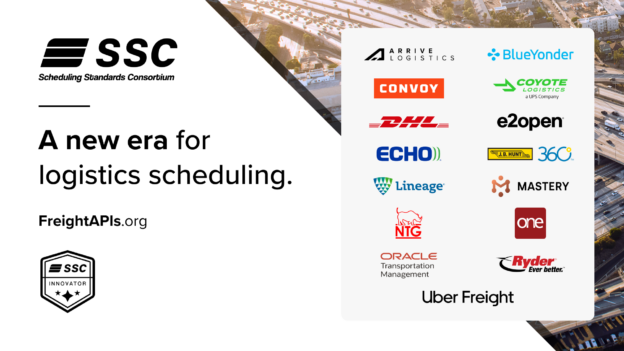Freight Market Outlook: Three Questions on COVID-19 Reopening and Recovery
Freight Research, Industry Insights, Shippers • Published on May 13, 2020
It has been two months since President Trump declared the national state of emergency. As states begin to reopen, questions linger around what recovery means for the freight industry.
In Convoy’s mid-year market outlook for 2020, we share our latest analysis on freight rates and supply chain trends, covering the following questions:
- How will reopening impact truckload demand in the near future?
- Have we reached rock bottom on freight rates?
- What will freight rates look like on the 6-12 month horizon?
ubscribe to Freight Economics Updates to get the latest developments delivered directly to your inbox.
View our economic commentary disclaimer here.
You can read the a transcript of the conversation below:
Ari Bixhorn: It has been just about two months since President Trump declared the national state of emergency. Some states are starting to open back up now. So what are we seeing in terms of recovery? Where do you see truckload demand going over the next couple of months?
Aaron Terrazas: The worst is clearly behind us. That’s the good news. We are starting to see truckload demand rebound in our network from the late April lows. If you look at overall truck demand through Convoy’s network, it’s about 5% to 10% below where it was in late February, just before the COVID-19 pandemic hit. There are of course, divergences across the different industries that we service. You could look at a sector like consumer packaged goods where demand has stayed steady and is slightly above where it was in late February, food and beverage is slightly below, the industrial sector still anywhere from 15% to 20% below where it was at the end of February. So a wide divergence in outcomes, but in general the trend is on the rebound.
Looking beyond the immediate horizon of this week and the next couple of weeks, there is a little bit less uncertainty than there was last time we spoke about, two or three weeks ago. You think about the shape of the economic recovery ahead, there is an emerging consensus that, at the very least, this is not going to be a V-shaped recovery. If you think about that alphabet soup of recoveries that we talked about in March, the V, the L, the W, all those different options. The consensus is that it’s not going to be a V-shaped recovery. Most of the consensus is focusing on an L or a swoosh shaped recovery. That means a gradual rebound in economic activity over the summer and fall. Still, enormous uncertainty about whether or not there will be a second round of infections, and a second round of stay-at-home orders in the fall and winter. But in general, I think people are focusing on that gradual rebound.
That said, there are really two big headwinds on the horizon when you think about how quickly and how strong the rebound is going to be. First and foremost, think about factory capacity. That’s going to be permanently slower for a while. Manufacturing capacity, factory output was about 75% for most of the past decade. If Chinese factory output is any guide, then capacity is probably going to take anywhere from a 5% to 15% hit structurally until there’s a vaccine.
Equally importantly on the horizon, it’s become increasingly obvious that a lot of the jobs lost in March and April are not coming back. And so that’s going to mean an income hit for a lot of households. Some rough estimation suggests that about a percentage point increase in the unemployment rate over the year translates into about 4% to 7% decrease in consumer spending. Think about the surge of unemployment we’ve seen, that’s about a 30% decline in consumer spending that we can expect. Some of that will be offset by the increase in unemployment insurance, but not all of it. And that permanent income shock is going to be there lasting for some period ahead.
Ari: Aaron, in the truck market, we’ve seen a lot of news coverage about rates. The fact that they’re low, there’s increasingly a sense in the industry that they can’t get much lower. So the question is, have we reached the lower limit for rates?
Aaron: You’re right. We are starting to hear that: That this is the absolute lower bound for the trucking industry. I think a lot of carriers out there are struggling with how low they’ve got, and that’s very real. I think a lot of this conclusion is also drawn from the fact that when you compare average rates per mile right now, it’s roughly on par with what the industry average costs per mile are. I’m reluctant to draw definitive conclusions there, just because those averages can be so misleading. Anyone who works with carriers knows that there is such a wide range in costs that they do carry. You think about the diverging insurance, or vehicle financing costs. Some of them have newer vehicles, some of them have older vehicles. If you think about larger fleets, often larger fleets can afford to idle one or more of their vehicles while running the others in order to just collect revenue, even while those other vehicles are sitting idle.
So I think comparing those averages is dangerous, because there are so many divergent experiences across these different carriers that have very different carrying costs, varies on empty miles that they run, on diesel prices, which we know are very low now. So I agree that rates are low and it’s pretty hard to imagine getting lower, but basing it off of that idea that costs are on par with rates is a little dangerous.
Ari: What about the question that is on everyone’s mind, and that is what’s going to happen to rates on the longer term horizon, maybe 6-12 months out?
Aaron: Yeah. I mean, that is I think the question that we most commonly get from shippers. Everyone wants to know: What is the rate outlook? Likely so they can think about costs on the 12 month horizon. I think you hear very diverging narratives here. On the one extreme you hear doomsayers say that because of this persistent gap between what consumers are spending, what factories are going to be turning out, you’re going to see that consistent gap between supply and demand. And that’s going to give rates very little scope for moving upward. On the other extreme you hear narratives around the elimination of supply from carrier bankruptcies, and how that could jolt prices upward as early as later this year.
Some of this is, of course, wishful thinking. A lot of it depends on what side of the market you sit on, and how you view these trends, and how you hope they’re going to play out. Beneath those headline numbers, there will probably be a difference between contract and spot rates. For spot rates we just talked about how it feels like they’re maybe toward the bottom of the range, and they probably do have some room to move higher, particularly going into the summer. But beyond that, there are so many uncertainties about what will happen. They could flatten out or dip again.
For contract rates, it’s easier to imagine a bigger move upward, just because so many of the contract rates that are being reset right now were initially set mid last year when rates were low and on a downward trajectory. The workhorse forecasting models that are typically used for that kind of prediction typically tend to miss turning points. So I can imagine contract rates surging a little bit more than spot rates on the 12 months horizon.



